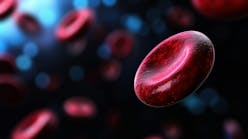Looking through the microscope, a scientist takes a deep breath and holds it. Random and jerky droplets appear but move too quickly to be studied accurately. Using a high-speed digital camera, the scientist freezes the droplets in a series of images that can later be properly analyzed. This scientist could be studying the mixable properties of new paint colors, or he could be working on a revolutionary new vaccine. Welcome to the world of microfluidics.
Introduced in the 1980s, microfluidics is an offshoot of the more commonly known lab-on-a-chip technology. It is applied in the fields of chemistry, physics, biotechnology, and engineering in which small volumes of fluids are analyzed. Microfluidics technology exists in many everyday objects, including liquid pumps, gas valves, and consumer inkjet printers. Have you ever wondered how an inkjet printer manages to accurately place millions of miniscule droplets of ink on a glossy sheet of photo paper? The printhead is finely calibrated to deliver the same tiny amount of ink in the correct place, over and over again. Microfluidics technology is also used in the development of DNA chips, micropropulsion, and microthermal imaging.
Gaining momentum as a viable research tool, microfluidics is proving to be particularly useful for scientists researching cell structure and function. Since all living things are made of cells and almost all cells are microscopic, the study of human, plant, and animal cells in the past century has become vital to our continued survival on Earth. For more detailed analysis of their work, cell researchers are combining microfluidics with the use of high-speed cameras. High-speed imaging is already being used in the lab-on-a-chip field, which is the integration of several lab functions on a chip, where it has significantly helped advance the discovery of new scientific data.
“The lab-on-a-chip field is increasingly using high-speed cameras,” says Jon Edd, PhD, assistant professor of mechanical engineering at Vanderbilt University in Nashville, TN. “High-speed cameras with short exposures allow us to visualize dynamics of fast-moving objects on a microscope without blur, such as a sample of micro-particles in water, a sample of blood, or a mixture of different fluid phases such as oil and water, or water and gas. Without these cameras, all we see is still images or blur,” he explains.<
Microfluidics welcomes high-speed cameras
Edd's areas of research include inertial and drop-based microfluidics (BioMEMS), fluid mechanics, heat transfer, non-equilibrium thermodynamics, cryopreservation, and cryosurgery. “The primary use of high-speed cameras in my field right now is for research and testing of prototype designs. Without them, it would be difficult to understand how my network of microfluidic channels is being experienced by the cells, particles, and droplets which flow through except in an average sense,” he says.
This cameras' technology came to Edd's attention during his postdoctoral fellowship at the BioMEMS Resource Center in Massachusetts. “I had never used a high-speed camera, though I knew we needed one for my lab, and I wanted to find the right set of specifications for our purposes of tracking individual cells or particles in flow,” he explains. Some of Edd's counterparts had already tapped the advantages of high-speed cameras for cell study. After assessing digital imaging needs, Edd recommended the purchase of a high-speed camera to better facilitate the research efforts of the BioMEMS Resource Center.
On starting his own lab at Vanderbilt University, Edd purchased a high-speed camera for studying cells traveling within a high aspect ratio microchannel, for example. This is a one megapixel high-speed digital camera with a custom-built CMOS sensor — a device that turns an optical image into an electronic signal — designed for high-speed usage. The custom CMOS sensor provides a balance of sensitivity, speed, and resolution, supporting high-speed applications. Additionally, CMOS does not “bloom” (creating fringes of light around very bright objects in an image).
Being able to set the camera's exposure to as little as one microsecond was a key factor in Edd's choice of camera.
“In doing my research, I needed a camera with a short exposure time, especially when there are particles that are moving quickly relative to their size. This brings up another problem; the signal-to-noise ratio must still be high enough to capture a clear image, and sometimes a short exposure will work against this. The solution is to increase the intensity of the transmitted light source and/or reduce the bit-depth of the images from the software interface. This was easy with this camera since it supports 8- and 12-bit pixel depth.”
The camera's wide aspect ratio further underscores its importance in scientific research and study. This feature allows moving subjects to stay in frame longer than is possible with other cameras on the market, which in turn allows more time to view the event being recorded.
A high-speed application with speedy results
As a high-throughput camera with the ability to record at 500,000 frames per second, Edd's camera offers the largest resolution for a fixed frame rate and enabled him to reveal detail unseen to the human eye. The camera's active pixel size of 20 microns also exceeded his expectations.
“Frame rate is very important when using a high-speed camera to track individual cells or particles in flow. It is necessary to capture several video frames as they transit the microscopic field of view, and this can sometimes be tens or hundreds of microseconds. Frame rate is not something that can be compromised.”
The camera allowed Edd to dramatically improve the quality of his research and discern the high-speed motions of cells and particles.
“In particular, we have been able to better understand flow conditions, which result in pattern formations in microchannels. This is when cells or particles evenly space themselves, allowing single-cell encapsulation in picoliter droplets at some kHz frequency. It would have been much more difficult to see what was occurring without using a high-speed camera” Edd says.
“As an alternative, we could have looked at still frames with short exposures; it would not have been as efficient. It helps immensely to see how the behavior of a particular group of cells or particles evolves with passing through the view region,” he notes.
A business unit of the AMETEK's Materials Analysis Division, Vision Research, Wayne, NJ, designs and manufactures high-speed digital imaging systems used in applications including medical research. Visit www.visionresearch.com.





